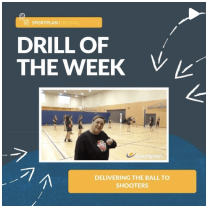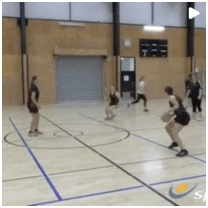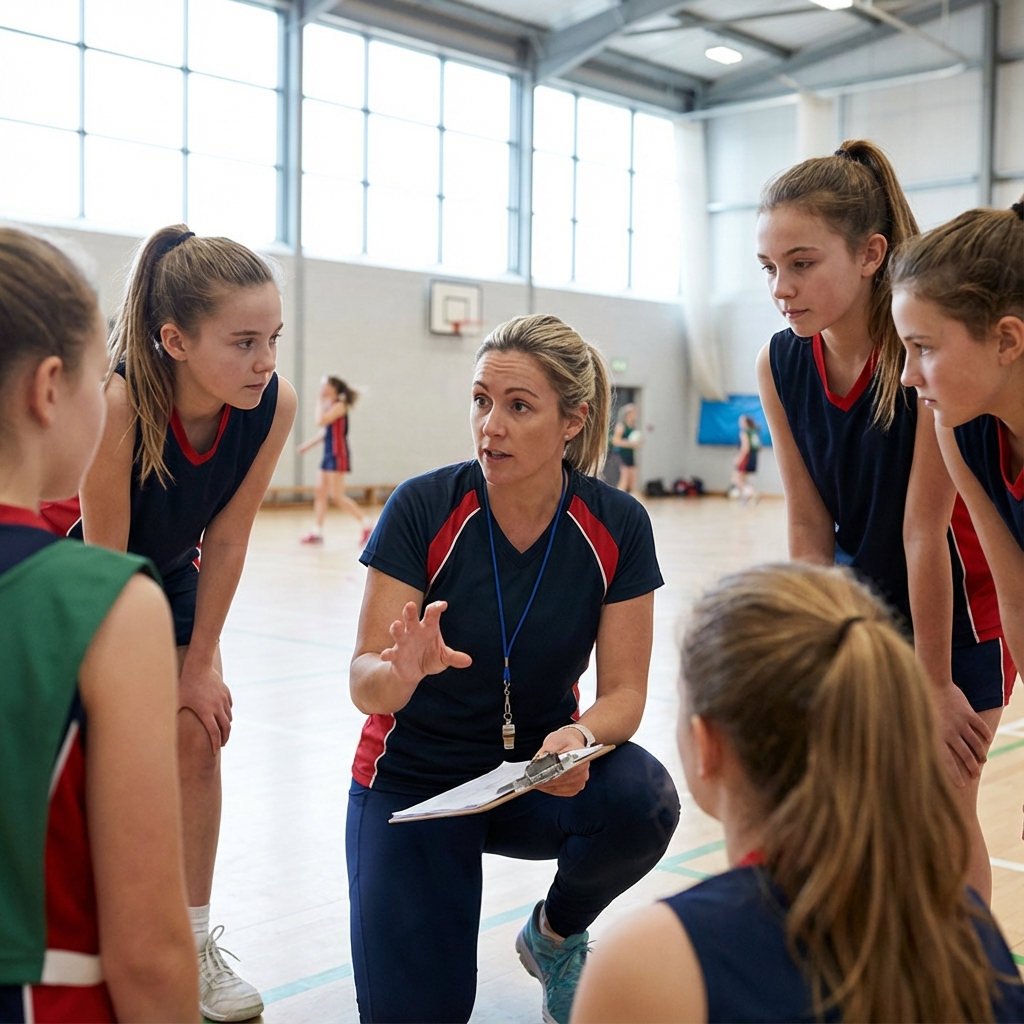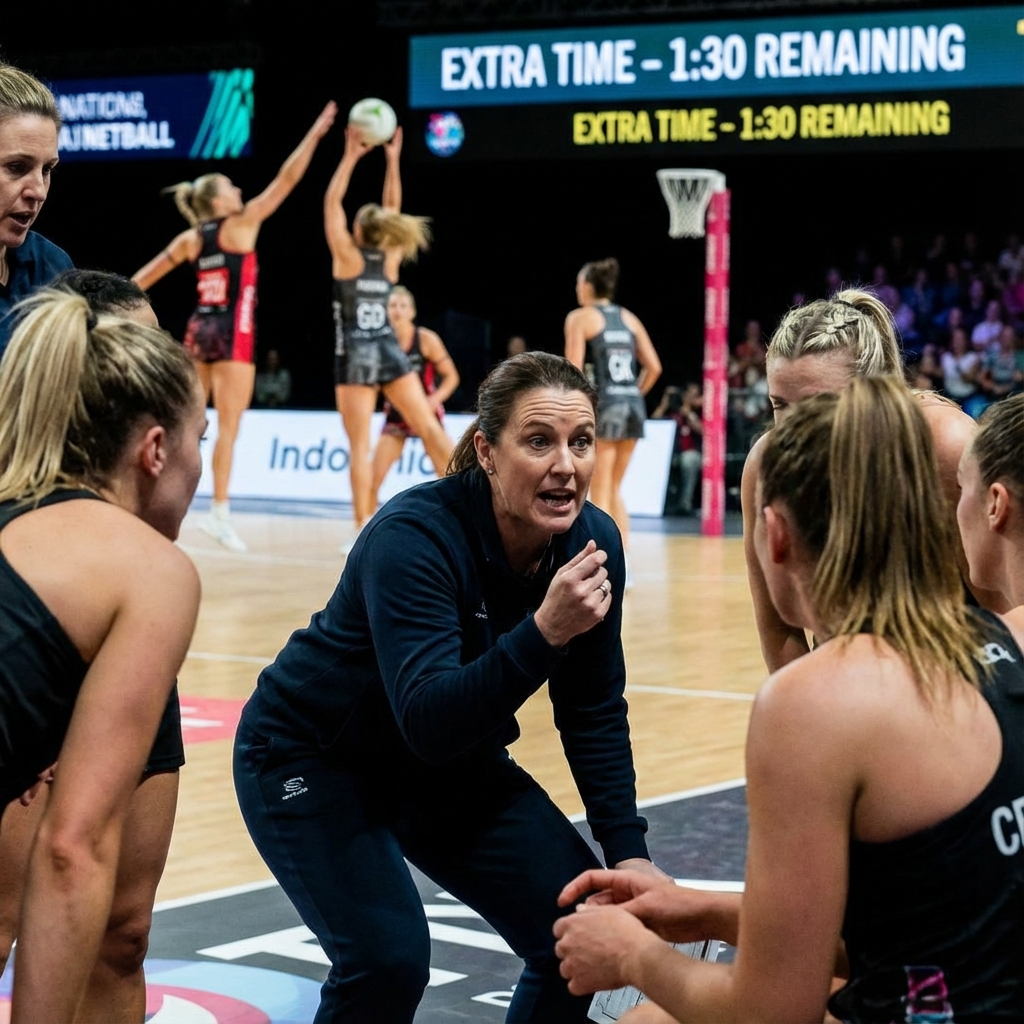Rules question: Causing contact?
After my opponent release the ball can I use my body but not arms to block in front of her so as to prevent her from going to the front?( In centre third) If the opponent just run ahead and crash on the defender, is it a contact?Or in fact the action of the defender preventing the attacker to run towards goal third is obstruction or a rule called" causing contact"?





it depends on how it is done. what you are descibing is basic zoning or blocking. when done correctly (ie your opponent doesnt have the ball) you can defend right up close and using a stance that has your feet about hip width apart, arms down by your side, knees soft, and up on your toes, you can attempt to keep your opponent from going into a certain area. however you can not step into the path of your opponents path suddently and give them no option but to contact you (forced contact). you will find that any attempt of zoning or blocking will bring on a certain level of bodily contact between you and your opponent which will generally be considered fair play, but they can not just push you out of the way using any part of their body. learn to stand your ground when they are pushing a lot to force them to push you over if they wish to get away. the main reason to zone/block is to slow down a play, or to restrict movement of a player. this can lead them to get frustrated with you and affects their focus onto you and away from the game. both are good reasons to do it. as long as you are keeping your base (your feet width) short (under your hips) you wont cause tripping, and dont be too low or you will end up putting your knee into your opponent which is also not a safe practise. play safe and fair, and this tactic should completely annoy the hell out of your player...lol
it depends on how it is done. what you are descibing is basic zoning or blocking. when done correctly (ie your opponent doesnt have the ball) you can defend right up close and using a stance that has your feet about hip width apart, arms down by your side, knees soft, and up on your toes, you can attempt to keep your opponent from going into a certain area. however you can not step into the path of your opponents path suddently and give them no option but to contact you (forced contact). you will find that any attempt of zoning or blocking will bring on a certain level of bodily contact between you and your opponent which will generally be considered fair play, but they can not just push you out of the way using any part of their body. learn to stand your ground when they are pushing a lot to force them to push you over if they wish to get away. the main reason to zone/block is to slow down a play, or to restrict movement of a player. this can lead them to get frustrated with you and affects their focus onto you and away from the game. both are good reasons to do it. as long as you are keeping your base (your feet width) short (under your hips) you wont cause tripping, and dont be too low or you will end up putting your knee into your opponent which is also not a safe practise. play safe and fair, and this tactic should completely annoy the hell out of your player...lol
Yes you can use your body to block opponent's movement down court BUT if she is already moving at speed or committed to a particular landing space and you move into the space she is driving for causing contact it will be correctly penalised as "contact - causing". If she is just moving slowly down court and you are slowing the process with a bit of incidental body contact by both players contesting for space no penalty should be applied as both players are offending and we don't tend to do toss ups for contesting anymore (just warn if getting too heated). If a defender is bodying up a player who is not really challenging for space this may also be penalsied. Beware of "Contact - causing" being viewed as deliberate contact and either potentially dangerous or not in the spirit of the game so if repeated by the offending player it may lead to some time to reflect off court.
Great answers', I am trying trying to teach this to my 11 yr olds but was having trouble gettinh them to understand> This has clarified it for me! Thankyou.
I am am umpire and you can not physically block the pass it is both contact and obstruction even if they dont have their arms up. Because they are in the space of the passer it is your players contact if the ball pushed into your player because they are in the others spcae which is where the both contact and obsrtruction at rthe same time. But dont worry it does not happen a lot in games.
This post is just food for thought and has some relevance to Canetti Chan's question. I had the question raised by an angry parent last night as to how an umpire can penalise one player for contact when both players are moving towards the ball and there is contact by both players. I was a spectator and felt way too much criticism was made of the young umpires by the others around me. I explained that from my experience several factors need to be considered e.g. angle of drive to ball by each player, is one slightly ahead of the other, is there a genuine attempt to catch the ball by both players, can one player not see the other player coming, who committed to the space first etc. After some experience umpiring, all these factors will then play in your head to help you make what is essentially a judgement call and for which the rule book is not a lot of help. He admitted that there was more to umpiring than he thought and perhaps he and the other spectators expected a bit too much from the young umpires.
A player may be within the distance of .9m from a player with the ball as long as no attempt is made to defend/intercept and there is no interference to the passing or shooting action. A player who pushes the ball into a player within the .9m and not actively defending or interfering would be penalised for "contact - causing" if the rules are correctly applied.
Good discussion! My advice would be to purchase an official rule book and ask your association to hold a rules forum. There are three parts to the contact rule (17). 17.1 says: "no player may contact an opponent either accidentally or deliberately in such a way that interferes with the play of that opponent or causes contact to occur".During play, if contact occurs, umpires might consider whether contact is accidental or deliberate and whether it interferes with play. Every situation is different so I would hope that the rule is applied in context.
Answered using Sportplan on Mobile
Understanding netball rules about causing contact is crucial for a fair game. According to the rules, a player causes contact if they impinge on an opponent's space, impede their play, or use their body to gain an unfair advantage. This includes actions like pushing, tripping, or body blocking. By adhering to these rules, players can ensure a safer and more enjoyable experience on the court.

















